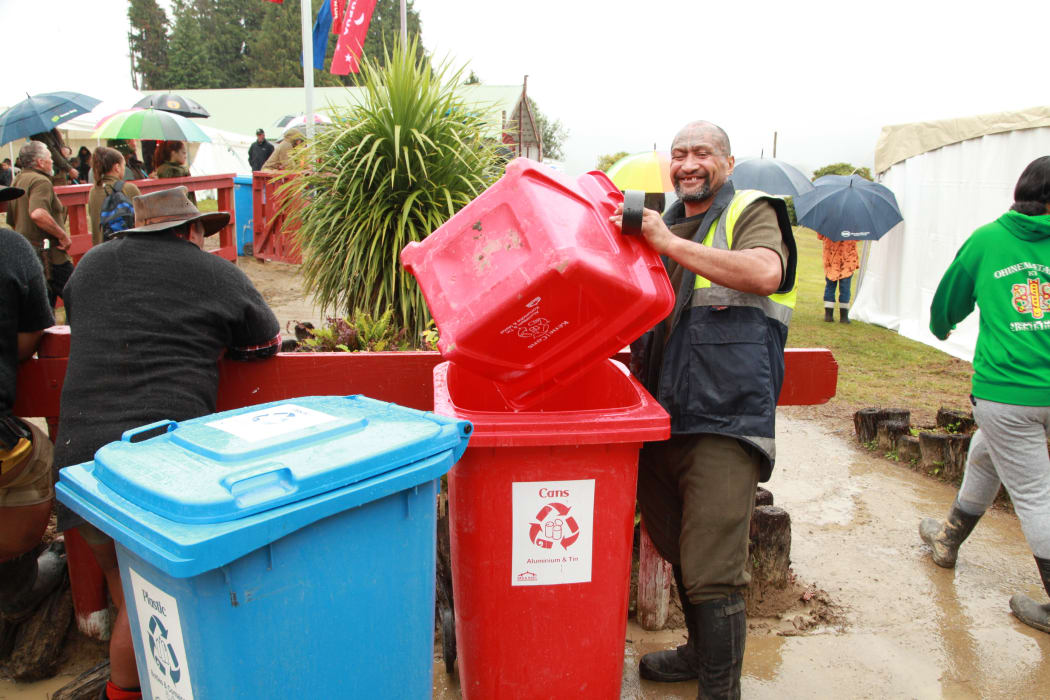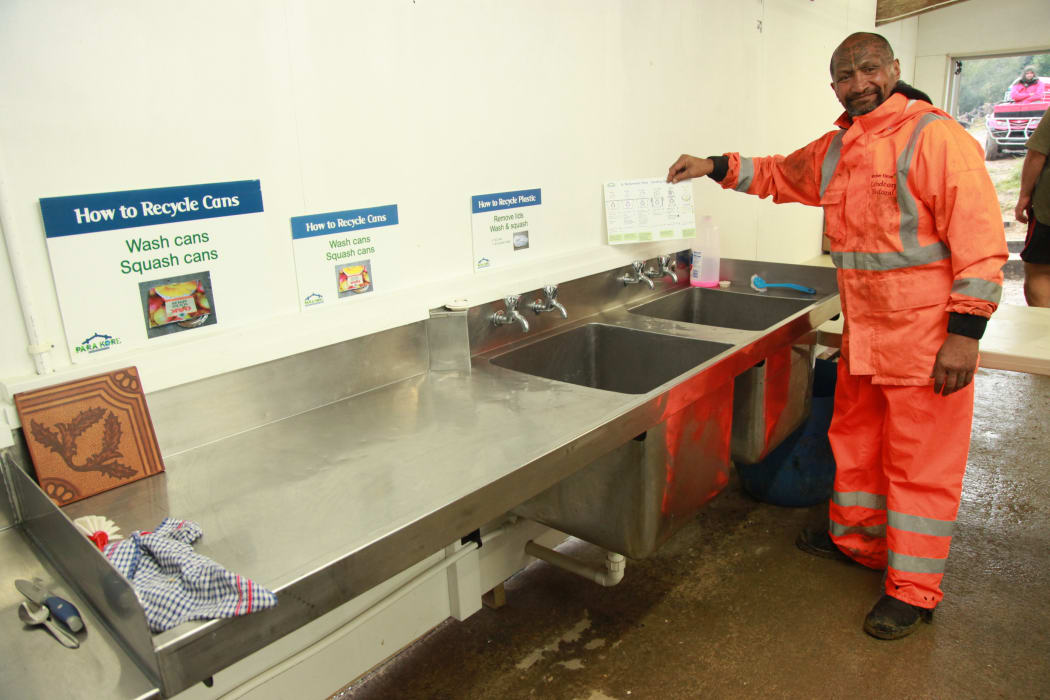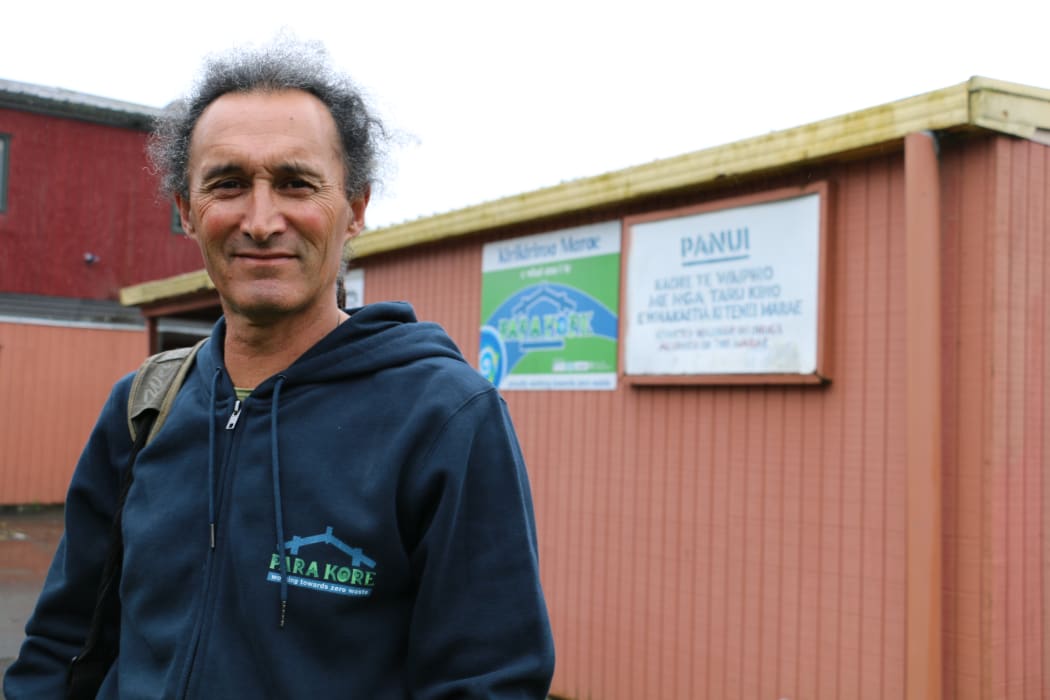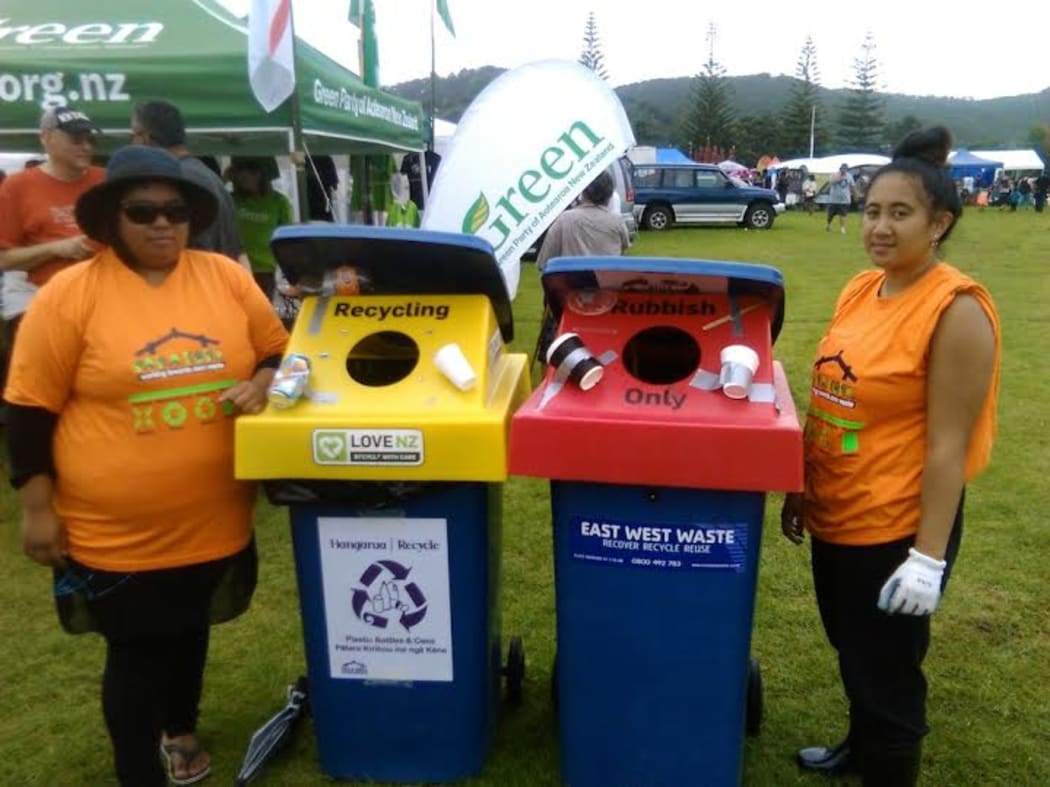
Paratene Ripia Nō Ngai Tuhoe. Photo: RNZ/Justine Murray
The zero-waste scheme Para Kore has become a kaupapa for over 135 marae in the North Island. Te Ahi Kaa visits Kirikiriroa Marae in Hamilton to find out how it works.
Para Kore (Zero Waste) was formed in 2009 and brought to the table by Gannon Ormsby who worked at the Waikato Regional Council.
While attending the Tainui Games in 2008 at Hopuhopu Marae, Gannon noticed the amount of waste from the large-scale event.
Not long after, a series of meetings were held to discuss how marae could adopt recycling practises.
In 2008, Jacqui Forbes (Nō Ngāti Paoa, Ngāti Maniapoto) was working for the Raglan based community programme Extreme Zero Waste and was invited to those meetings. She successfully applied to the Sustainable Management Fund – and Para Kore began.
The timing was good because months prior, the Waste Minimisation Act was passed, which meant a $10 levy on every tonne of waste taken to landfills. (About 50 perecent of the levy money forms a contestable fund distribution to waste management and recycling programmes.)

Paratene Ripia Nō Ngai Tuhoe with typical Para Kore signage at Marae. Photo: RNZ/Justine Murray
Up to 35 marae in the Hauraki, Waikato and Raukawa areas have implemented Para Kore, which involves minimising waste, recycling and composting.
To date almost 150 tonnes of waste has been diverted from landfills.
Para Kore run workshops across the North Island.
“Our second workshop is the system of stuff so there we look at extraction, production, distribution, consumption and disposal…in that making of all of the products that we use in our lives there is a carbon footprint, there’s a lot of waste created, there’s a lot of pollution” – General Manager, Jacqui Forbes.
Pine Campbell works for Para Kore in Hamilton and works closely with Kirikiriroa Marae, He has had his fair share of obstacles and says colour-coded recycling wheelie bins have been stolen on more than one occasion.
“In the early days we got a lot of students finishing up Uni and filling our bins up with their stuff”

Para Kore advisor Pine Campbell Photo: RNZ/Justine Murray
Pine says that in order for Para Kore to work, it needs to be practised by more than one or two people. Each marae needs to identify a ‘champion’ who can run the kaupapa effectively.
“For years we’d been running recycling, we’d been sorting rubbish. And you can only sort rubbish for a certain amount of time before you get burned out because all you are doing is looking after someone’s else’s problem. We need to be thinking about how do we minimise the waste.”
Kirikiriroa Marae is located on a busy highway in Hamilton and is the site for Te Kohao Health, Te Kuhuna learning centre, and the region's National Te Kohanga Reo Trust.
Most days the site is a hive of activity and because of the numbers of people, there is more waste to recycle.
'Bokashi' is a technique of composting food scraps and other compostables. Once bokashi mix and worms are added to the process, the mixture is suitable for gardens.
Pine says that since Para Kore began he has created 35 wheelie bins of Bokashi.
This year Para Kore won the National Globe Award for New Zealand at this year’s Energy Globe Awards.

Hine and Te Rina Popata promote Para Kore works at Waitangi on Waitangi Day 2016. Photo: RNZ/Justine Murray
What is Para Kore?
A waste minimisation initiative implemented at marae and Māori organisations. The goal is Zero Waste by 2020.
How do I join?
All information is available at their website with tips and helpful hints about how to recycle and reduce waste. Para Kore is available in eight regions.
What is required for Para Kore to successfully run at a marae?
A Para Kore champion needs to be identified from the outset, this person has the task to implement it and teach other whanau of that marae about how it works.
Pine Campbell says one of the main problems at marae is that too much food is cooked, therefore a lot of it is wasted. Pine says that Marae need to be a bit smarter about food portion control and packaging – for example, instead of plastic bottles of fizzy drink using jugs of water, which are good for the environment and people’s health.
What are the some of the obstacles to Para Kore?
Capacity of the marae or organisation, not having the people numbers to carry it out effectively.

